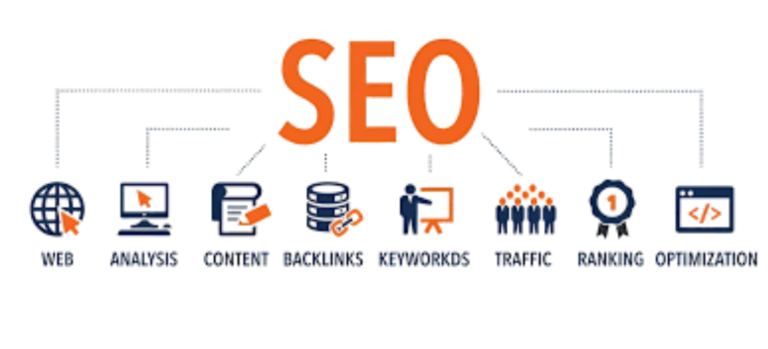The Significance of Net Promoter Score (NPS) in Modern Business Landscape
Introduction to Net Promoter Score (NPS)
Understanding the net promoter score (NPS)—a metric that gauges customer loyalty and satisfaction—is becoming crucial for businesses looking to succeed in the competitive modern market. At its core, NPS quantifies the likelihood of customers advocating for a brand based on their experiences. This idea was based on the idea that a customer’s propensity to refer a good or service is a reliable sign of their loyalty and, consequently, of the business’s growth potential.
NPS originated in the early 2000s, disrupting the traditional landscape of customer surveys. Instead of relying on detailed and often lengthy questionnaires, NPS introduced a nuanced approach: it asked customers one pivotal question to yield insights into their loyalty. While seemingly simplistic, the depth of understanding that NPS affords is powerful, allowing businesses to accurately define their trajectory in terms of growth and customer satisfaction.
Championing this customer-centric perspective, NPS implementation became widespread among businesses eager to cultivate healthy customer relationships and adapt their strategies based on reliable data. Today, NPS is lauded for its simplicity and direct correlation to a company’s success, with leaders in various industries using NPS data to guide decision-making and hone their competitive edge.
How NPS Shapes Customer Experience
NPS is a fundamental component of customer experience measurement. Customer experience is the culmination of all consumer encounters with a brand. An elevated net promoter score (NPS) signals more brand advocates, highlighting an outstanding customer experience that incites sharing and recommendations. These advocates drive organic growth, thanks to consumers’ high trust in personal recommendations over advertisements.
Conversely, detecting detractors—those who provide lower NPS scores—offers strategic avenues for improvement. Acknowledging and addressing detractor feedback is critical in managing negative perceptions and turning dissatisfied customers into satisfied ones. This cycle of feedback and action fosters a company’s reputation for valuing customer input and consistently striving to provide top-notch experiences.
Moreover, NPS’s predictive power extends beyond mere numerical analysis. Vigilant NPS monitors frequently find a positive relationship between increased business growth and high NPS scores.
The Effective Application of NPS in Business Strategies
NPS is not merely a standalone figure; its real value lies in its application to business strategies. Effective NPS implementation requires businesses to shift from passive score observation to active integration into feedback mechanisms. Gathering NPS data opens a pathway for nuanced customer insight—which can be a beacon for cultivating brand loyalty, refining products, and embarking on service improvements that genuinely resonate with consumers.
This proactive approach extends across diverse business departments, aligning with marketing strategies, product development, and service delivery. The NPS feedback loop thus becomes a company-wide quest, not just in resolving current issues but also as a catalyst for innovative thinking and long-term planning. Several success stories and case studies on the NPS application recount how companies have aligned their operations with customers’ expectations, resulting in considerable customer retention and profitability gains.
Furthermore, NPS provides a wealth of personalized insights. Companies can craft individualized experiences, becoming the new frontier for customer satisfaction. In this context, NPS acts as a central pillar of data, bringing together demographics, preferences, and behaviors to usher in an era of bespoke services that align closely with customers’ evolving needs and desires.
The Impact of NPS on Organizational Culture
Embracing NPS as a performance measure extends beyond the scope of customer feedback; it engenders a corporate culture rooted in customer centricity. Companies that successfully integrate NPS within their operating models tend to view it as more than just a number—they see it as a reflection of their dedication to customer satisfaction. This culture shift has broad implications, encouraging cross-departmental collaboration and a shared commitment to continuously enhancing customer experience.
Moreover, NPS serves as an invigorating force for employees. It bridges the gap between an organization’s efforts and the resulting customer feedback. When employees see a positive NPS, they witness firsthand the fruits of their labor, creating a sense of accomplishment and a powerful incentive to aspire to even greater heights in their roles.
All these factors combine to forge a corporate environment where customer feedback is sought after, highly esteemed and swiftly acted upon. This distinct culture often becomes a defining trait of leading companies known for their products and services and exceptional dedication to their customers.
Comparing NPS with Other Customer Satisfaction Metrics
NPS is a pivotal metric, yet it operates most effectively when considered alongside other critical customer satisfaction scores such as CES (Customer Effort Score) and CSAT (Customer Satisfaction Score). While CSAT assesses customer satisfaction after an engagement or transaction, CES measures how easily customers connect with a company, providing insight into operational efficiency. NPS complements these measures by offering a long-term perspective on customer loyalty and the potential for sustained organic growth.
While NPS underscores the depth of customer relationships, metrics like CES and CSAT provide snapshots detailing the quality of transactional experiences. In some industries, particularly those with frequent direct interaction, CES might assume greater importance. Yet, an integrated metric approach that includes NPS can provide a three-dimensional view of customer sentiment, imperative for developing a rounded customer experience strategy.
Businesses can tailor their strategies by combining various metrics to meet their customers’ varied expectations and experiences. A robust customer satisfaction program harnesses the insights of NPS alongside other key performance indicators, all of which contribute to a more comprehensive understanding of the customer’s journey.
NPS in Different Sectors: A Cross-Industry Analysis
The adaptability of NPS is evident across numerous industries. In the service sector, where customer interaction is frequent, and expectations are high, NPS can help quantify the intangible aspects of service delivery. With its emphasis on consumer choice and shopping experience, retail utilizes NPS to ensure those decision-making moments are positive and aligned with brand loyalty. Technology firms, on the other hand, apply NPS to assess user satisfaction with software interfaces, ease of use, and overall value provided by their products.
NPS can illuminate customers’ nuanced expectations in every industry and inform companies how they stack up against competitors. Benchmarking NPS scores within an industry can illuminate areas ripe for innovation and improvement, guiding businesses toward practices that can transform satisfied customers into enthusiastic brand advocates.
For example, understanding that personalization significantly impacts consumer satisfaction, retailers might employ NPS feedback to develop tailor-made loyalty programs, thus deepening the customer’s connection to the brand. Effective use of NPS data can transform every industry, revealing pathways to excellence in customer experience and business growth.
Overcoming Challenges and Limitations of NPS
Implementing NPS has its challenges; inherent biases can skew the data. Brand enthusiasts, or promoters, can disproportionately influence the score, as can detractors who may have a louder voice in feedback mechanisms. Ensuring a balanced representation of the customer base in NPS surveys is critical to obtaining an accurate reflection of overall sentiment.
Moreover, the potential for cultural and demographic influences on NPS scores necessitates a more nuanced approach to data analysis. Customers from different backgrounds may evaluate the likelihood of recommending a company differently, and businesses must be aware of these variances when interpreting NPS results. This cultural diversity in feedback calls for a broader array of research methods to complement NPS, ensuring a holistic view of customer satisfaction.
An overemphasis on any metric, including NPS, can lead to a myopic perception of customer satisfaction. Adopting a composite view by integrating quantitative data with qualitative insights enriches the understanding of customer experiences. An in-depth exploration within Harvard Business Review on the loyalty economy underscores the importance of balancing NPS with additional, richer forms of customer feedback to achieve an authentic and versatile loyalty snapshot.
The Role of NPS in Digital Transformation
As the digital landscape evolves, NPS has embraced new methodologies to stay relevant and insightful. Integrating NPS tracking with cutting-edge digital tools such as CRM systems and big data analytics magnifies its effectiveness. This digital progression has enabled companies to aggregate and scrutinize feedback from many online and offline channels, fostering an all-encompassing view that is pivotal for precise and strategic decision-making.
The advent of real-time NPS analysis tools has been transformative, allowing businesses to respond quickly to customer feedback. This agility is crucial in an era of high and constantly shifting customer expectations. By responding timely to NPS data, companies can mitigate the impact of negative experiences and harness positive feedback to strengthen customer relationships.
With the fusion of NPS and digital transformation, businesses can precisely tailor digital experiences, utilizing data to anticipate needs and exceed customer expectations. This approach to NPS in digital strategy underscores the metric’s ongoing importance in shaping customer interaction landscapes, both present and future.
Advanced Techniques to Elevate NPS Results
To amplify NPS’s benefits, businesses are increasingly adopting sophisticated techniques that provide a deeper understanding of customer sentiment. For instance, incorporating open-ended responses into NPS surveys allows customers to expand on their scores with free-form comments, lending context to the numerical data and revealing more profound insights into the customer psyche.
Moreover, data collection and analysis advancements enable real-time NPS tracking, offering businesses a dynamic view of how customer sentiment evolves. Such on-the-fly accessibility to feedback creates a culture of instantaneous reaction, allowing companies to pinpoint and capitalize on opportunities for improvement or reinforcement swiftly.
Blending NPS data with individual customer profiles ushers in a new age of customization, opening doors to uniquely tailored experiences. The convergence of NPS and personalization heightens customer satisfaction and fosters loyalty in an ever-more-personalized marketplace.
Future Trends and Innovations in NPS Methodology
Trends in business intelligence and customer analytics portend a bright future for NPS. Predictive analytics holds promise for advancing NPS’s predictive capabilities, enabling businesses to act on forecasted trends rather than solely on historical data. This forward-looking aspect of NPS stands to redefine the business-customer relationship by empowering organizations to hone their strategies ahead of potential shifts in sentiment.
The rise of immediacy in customer feedback mechanisms also portends a new era of NPS application, wherein a business’s ability to respond and adapt on a near-immediate basis will become increasingly valued. In the future, integrating NPS with real-time analytics will become ever more critical, with customer feedback as a rapid gauge for business health and strategy refinement.
As markets evolve under the influence of new technologies and shifting consumer behaviors, NPS will undoubtedly adapt alongside. The agility with which it can provide strategic insights demonstrates its utility and potential for ongoing relevance, cementing its role as an indispensable metric in customer loyalty and corporate success.







